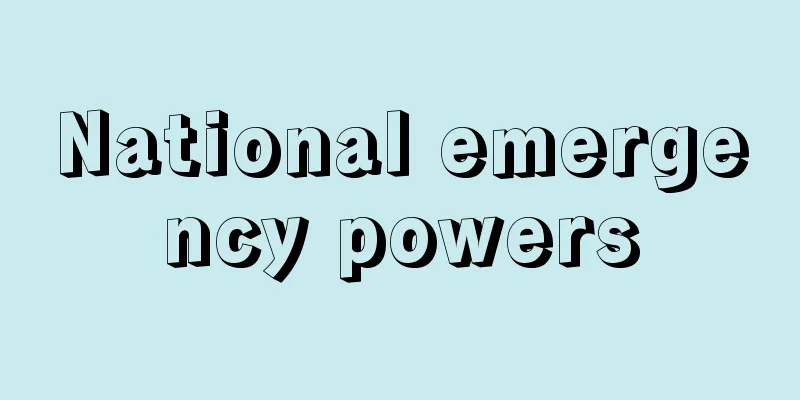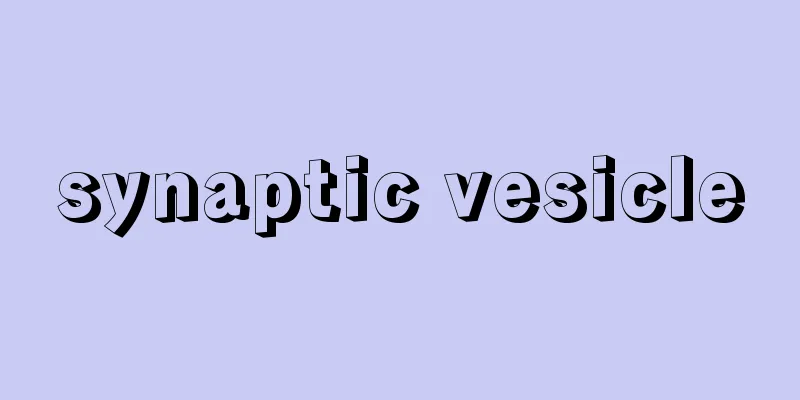Popular culture

|
Culture that is produced and consumed by a huge number of people. In modern society, all people in society have a mass aspect to them, to a greater or lesser extent, so modern culture shows the characteristics of popular culture. It is sometimes used in contrast to high culture. In this case, the social classes that enjoy culture are divided into high and low classes, and high culture is an intellectual, sophisticated, artistic culture based on the upper classes of society, while popular culture is used with a derogatory nuance as a culture enjoyed by the lower classes of society. Also, traditional culture rooted in the healthy lives of the people is called folk culture, while popular culture is sometimes used to mean a one-off culture that is the subject of fleeting consumption, targeted at a diverse group of rootless people who have left their hometowns and concentrated in cities with the development of industrial society. However, in modern society, the social significance of contrasting high culture with popular culture, or folk culture with popular culture, has largely faded. [Akira Fujitake] The background of the rise of popular cultureThe following points are important as the background to why popular culture has come to occupy a position as culture in modern society. First, the progress of basic democratization of society, especially the rise in literacy levels due to the spread of general education, and the penetration of ideas of human rights and equality through the realization of universal suffrage, have enabled people living in society to participate in the production and enjoyment of culture, especially the enjoyment (consumption) of culture. This has made it possible to establish a culture that treats the entire society as a market, that is, popular culture. Second, the progress of economic affluence. With the establishment of a social system of mass production and mass consumption, a mass market was formed and uniform, homogenous, standardized products became available at low prices. As a result, the lifestyles of the majority of people in society became uniform. Popular culture flourished on the basis of the standardization of people's lifestyles. Third, the development of mass media. Mass media spreads the same images throughout society in an extremely short period of time. On the one hand, the mass media have the power to spread common images throughout society, but on the other hand, they also have the power to cultivate and even develop favorable images in order to maintain the status quo in society and keep order. [Akira Fujitake] Mass media and popular cultureThus, modern culture shows the characteristic of being produced and disseminated by the mass media. Modern people have almost the same contact with the mass media, and experience changes in their environment through the information that the mass media provides them every day without rest. From this, popular culture has come to mean the culture that is provided to the whole of society by the mass media. Therefore, popular culture is also the target of criticism for promoting the standardization of culture and producing the lowest common denominator of cultural values by adjusting the cultural standard to the lowest social level of taste. Popular culture exerts the power to color various aspects of the daily lives of members of society with a common color. This situation is also promoted by the mass media's daily diffusion of a common message throughout society. Therefore, people living in the modern age cannot live in a state completely free from the pressure of popular culture. However, even in the age of popular culture, human life is not necessarily painted in a single color with the common color of society. Various cultures (subcultures) unique to each class have been created based on gender, age, occupation, area of residence, hobbies, and tastes. However, in the age of popular culture, the mass media quickly picks up on these subcultures that interest the general public, and a mechanism is at work to turn them into popular culture in a short period of time. In this way, popular culture is a culture that changes rapidly while involving large numbers of people. Furthermore, in modern times, the international transmission and exchange of information is remarkable, so popular culture has come to show strong global commonalities. [Akira Fujitake] "Today's Social Psychology 5: Culture and Behavior" by Keiichi Sakuda, Seiji Shinagawa, and Akira Fujitake (1963, Baifukan) "Postwar Japanese Popular Culture History" by Shunsuke Tsurumi (1984, Iwanami Shoten) "Popular Culture" edited by Shoichi Nakamura and Osamu Nakano (1985, Yuhikaku) [References] | | | | |Source: Shogakukan Encyclopedia Nipponica About Encyclopedia Nipponica Information | Legend |
|
膨大な数に上る大衆を対象にして、生産され、消費される文化。現代社会においては、社会のすべての人々は、多かれ少なかれ大衆としての側面をもっているから、現代文化は大衆文化としての性格を示す。 高級文化と対比して用いられることもある。その場合、文化を享受する社会階層を高級と低級の二階層に分け、高級文化は社会の上流階級を基盤にして、知的で、洗練された形式と内容をもち、芸術的な文化であるのに対して、大衆文化は、社会の低級な階層の享受する文化として、軽蔑(けいべつ)したニュアンスを込めて用いられる。また、民衆の健全な生活に根ざした伝統的な文化を民衆文化とよび、これに対して大衆文化は、産業社会の発展とともに、故郷を離れ都市に集中した根なし草で、雑多な人々を対象にして、つかのまの消費の対象となるその場限りの文化という意味で用いられることもある。しかし現代社会においては、高級文化と大衆文化を対比したり、また民衆文化と大衆文化を対比する社会的意味は大きく薄れてしまっている。 [藤竹 暁] 大衆文化成立の背景大衆文化が現代社会の文化という位置を占めるに至った背景として、次の諸点が重要である。第一は、社会の基本的民主化の進行、とくに普通教育の普及による読み書き能力の水準の上昇、そして普通選挙制の実現による人権と平等思想の浸透によって、社会に生活する人々が、文化の生産と享受に、とりわけ文化の享受(消費)に参加できるようになった点である。こうして、社会全体を市場とする文化、すなわち大衆文化の成立が可能になった。第二は、経済的豊かさの進行である。大量生産と大量消費の社会的仕組みが確立することによって、大衆的市場が形成されるとともに、画一的で均一的な平準化された商品が安価に普及することになった。その結果、社会の大多数の人々のライフスタイルが一様化されることになった。大衆文化は、人々のライフスタイルの平準化を基礎にして開花する。第三は、マス・メディアの発達である。マス・メディアは、社会全体に同じイメージをきわめて短時日の間に普及させる。またマス・メディアは、一方では社会全体に共通イメージを普及させる力を発揮するとともに、他方では社会の現状を維持し、秩序を保つために好ましいイメージを育て、さらには発展させる力をも発揮する。 [藤竹 暁] マスコミと大衆文化こうして現代文化はマス・メディアによって生産され、伝播(でんぱ)されるという性格を示すことになる。現代人は、マス・メディアに対してほぼ共通に接し、マス・メディアが毎日休むことなく提供する情報を受容することを通して、環境の変化を経験する。ここから、大衆文化は、マス・メディアによって社会全体に提供されている文化という意味をもつことになる。したがって大衆文化は、文化の画一化を進行させ、文化水準を趣味の社会的レベルの最低水準にあわせることによって、文化的価値の最低公分母を生産することになるとして、批判の対象ともなる。大衆文化は、社会のメンバーの日常生活の諸場面を共通の色彩で彩る力を発揮する。こうした状況は、また、マス・メディアが日々、共通のメッセージを社会に拡散することによって促進されることになる。現代に生きる人間は、したがって、大衆文化のこうした圧力から完全に無縁な状態で生きることはできない。しかし大衆文化の時代にあっても、人間の生活は、社会に共通の色合いによって一色に塗りつぶされてしまうとは限らない。 性、年齢、職業、居住地域、趣味嗜好(しこう)などによって、その階層に独自のさまざまな文化(下位文化subculture)がつくりあげられている。しかし大衆文化の時代は、こうしたサブカルチャーのなかで、一般の人々にとって興味と関心をひくものを、マス・メディアがただちに取り上げ、短時日のうちに大衆文化にしてしまうメカニズムが働いている。こうして大衆文化は、大量の人々を巻き込みながら、めまぐるしく変化する文化でもある。また現代では、情報の国際的伝達と交流が目覚ましいために、大衆文化は世界的な共通性をも強く示すようになっている。 [藤竹 暁] 『作田啓一・品川清治・藤竹暁著『今日の社会心理学5 文化と行動』(1963・培風館)』▽『鶴見俊輔著『戦後日本の大衆文化史』(1984・岩波書店)』▽『仲村祥一・中野収編『大衆の文化』(1985・有斐閣)』 [参照項目] | | | | |出典 小学館 日本大百科全書(ニッポニカ)日本大百科全書(ニッポニカ)について 情報 | 凡例 |
<<: Popular literature - taishu bungaku
>>: Rebellion of the Masses - The rebellion of the masses
Recommend
COS - Cosmetic Orthopedics
Abbreviation for charity organization society (mov...
Andrews, L.
…In the Elizabethan era, when the Church of Engla...
Miyano-so
A manor in Yoshiki District, Suo Province (present...
Amori - Amori
…In Akkadian documents from the second half of th...
Johann Friedrich Burgmüller
German composer. He studied under his father, who...
Seasoning (Gagaku) - Anbai
…The "flute" includes the hichiriki, va...
Whitney, WR
... General Electric (GE), which was formed in 18...
Yucca aloifolia (English spelling) Yuccaaloifolia
… [Takabayashi Masatoshi]. … *Some of the termino...
Printing - Nassen
It is also called "nasen." In a broad s...
Akashi [city] - Akashi
A city in southern Hyogo Prefecture. It was incorp...
Ciconia ciconia (English spelling) Ciconiaciconia
… [Yukio Taniguchi]. … *Some of the terminology t...
Bad Ischl
A resort town in the state of Upper Austria in cen...
《Jenufa》 - Ienufa
In 1881 he participated in the founding of the Br...
Reducible polynomial - Reducible polynomial
...A mathematical term. Something is said to be r...
Aerated Concrete - Kiho Concrete
Also known as cellular concrete. Concrete that ha...
![Numata [city] - Numata](/upload/images/67cc74d2bef10.webp)








